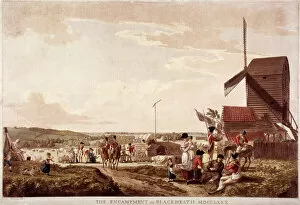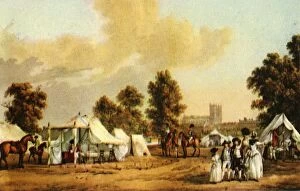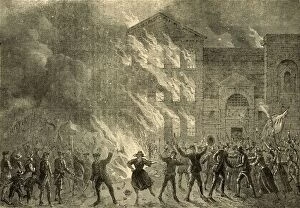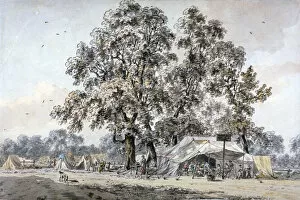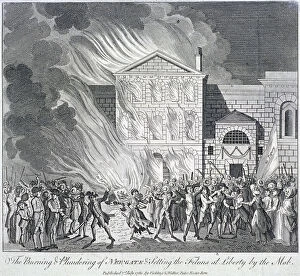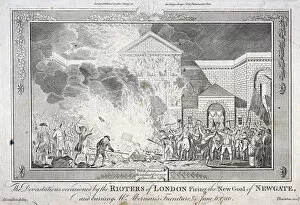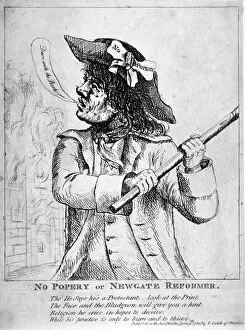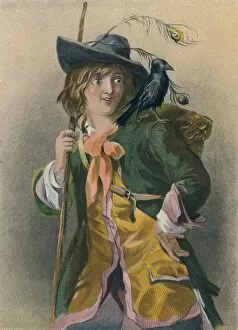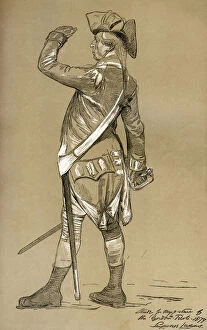Gordon Riots 1780 Collection
"The Gordon Riots of 1780: A Fiery Chapter in London's History" In the summer of 1780
For sale as Licensed Images
Choose your image, Select your licence and Download the media
"The Gordon Riots of 1780: A Fiery Chapter in London's History" In the summer of 1780, London was engulfed in chaos and violence as a series of protests turned into one of the most infamous riots in British history. Known as the Gordon Riots, these events were sparked by anti-Catholic sentiment and political unrest. The rioters set up an encampment on Blackheath, Greenwich, where they gathered to voice their grievances against Catholic emancipation. The scene was captured by artist Paul Sandby, who depicted the tense atmosphere that permeated the camp. Another painting by an unknown creator showcased a military camp in St. James Park during the height of the riots. It portrayed soldiers stationed amidst turmoil and uncertainty, highlighting their role in maintaining order during this tumultuous period. One particularly striking image depicted the burning of Newgate Prison—an iconic symbol of authority—in 1780. The flames consumed not only bricks and mortar but also represented a rebellion against perceived injustice. James Heath's artwork vividly portrayed "The Riot in Broad Street" on June 7th, capturing both protesters' fury and bystanders' fear as chaos erupted throughout London's streets. Various army encampments sprung up across Westminster and Hyde Park to quell the unrest. These temporary bases housed troops tasked with restoring peace to a city teetering on the edge of anarchy. Newgate Prison became a focal point for rioters seeking retribution against those they deemed responsible for their grievances. Artist Thornton immortalized this momentous event through his depiction of Newgate Prison during its darkest hours. Amidst all this turmoil, satirical prints emerged mocking both sides involved in these events. One such print titled "No Popery or Newgate Reformer. . " encapsulated public sentiment towards Catholics while reflecting societal divisions prevalent at that time. These anti-Catholic riots lasted from June 6th to 7th, leaving a lasting impact on London's history.

